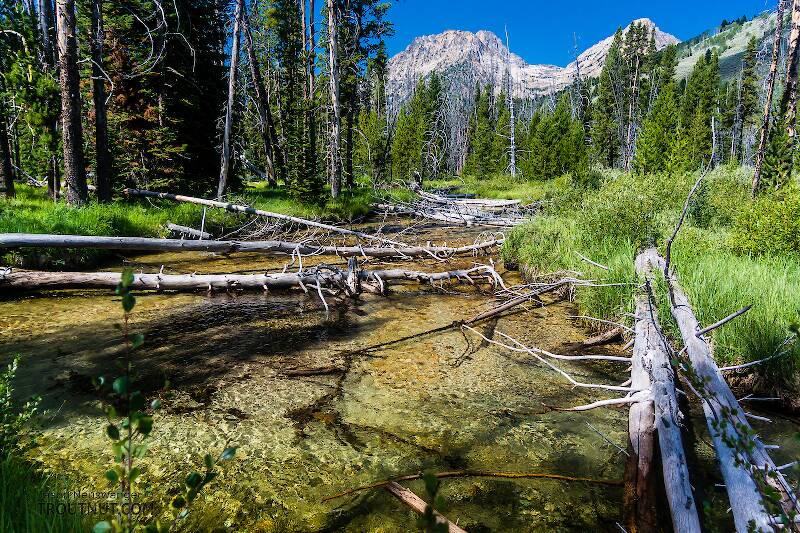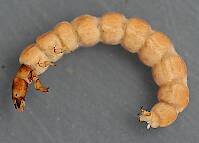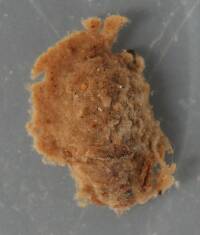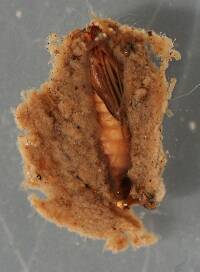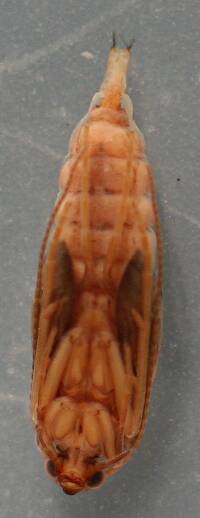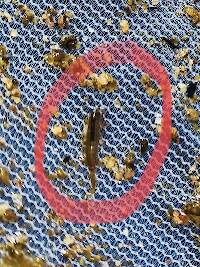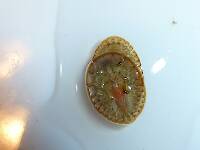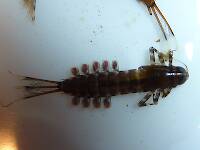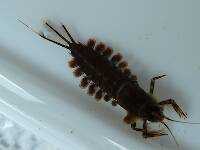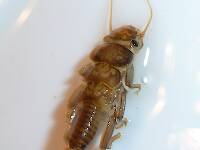
Blue-winged Olives
Baetis
Tiny Baetis mayflies are perhaps the most commonly encountered and imitated by anglers on all American trout streams due to their great abundance, widespread distribution, and trout-friendly emergence habits.
Featured on the forum

This one seems to tentatively key to Holocentropus, although I can't make out the anal spines in Couplet 7 of the Key to Genera of Polycentropodidae Larvae nor the dark bands in Couplet 4 of the Key to Genera of Polycentropodidae Larvae, making me wonder if I went wrong somewhere in keying it out. I don't see where that could have happened, though. It might also be that it's a very immature larva and doesn't possess all the identifying characteristics in the key yet. If Holocentropus is correct, then Holocentropus flavus and Holocentropus interruptus are the two likely possibilities based on range, but I was not able to find a description of their larvae.

Troutnut is a project started in 2003 by salmonid ecologist Jason "Troutnut" Neuswanger to help anglers and
fly tyers unabashedly embrace the entomological side of the sport. Learn more about Troutnut or
support the project for an enhanced experience here.
Troutnut on Oct 4, 2006October 4th, 2006, 3:51 pm EDT
For those who didn't see the link in the "Recent updates" column, check out this neat photo sequence of an Isonychia bicolor nymph emerging on a rock in Esopus Creek in the Catskills.
Jason Neuswanger, Ph.D.
Troutnut and salmonid ecologist
Troutnut and salmonid ecologist
GONZO on Oct 6, 2006October 6th, 2006, 12:37 pm EDT
These are truly extraordinary shots, Jason! I'm struck by a couple of things:
The crossveins and milky areas of the dun's wing really stand out. Did you play with the contrast, or is this enhancement-free?
Your comment about the precarious position of the emerging dun brings up something I've never considered. I know you're probably more familiar with those suicidal Midwestern Isonychia that like to emerge in open water, but it's not unusual to see the Eastern variety lined up on nearly vertical rock faces. It does make me wonder, though, if they select emergence sites for the degree of grip they provide. Perhaps this is why one rock may have a dozen shucks while a nearby rock has none. Just an idle thought, but one I've never entertained until I saw this sequence. I wonder if stoneflies might do the same?
I'm also reminded that I usually fished a dark, unstriped nymph imitation in the "old Esopus". On the Brodheads, many (but not all) of the Isonychia are distinctly striped. Did you notice any striped shucks on this day or were they all plain?
The crossveins and milky areas of the dun's wing really stand out. Did you play with the contrast, or is this enhancement-free?
Your comment about the precarious position of the emerging dun brings up something I've never considered. I know you're probably more familiar with those suicidal Midwestern Isonychia that like to emerge in open water, but it's not unusual to see the Eastern variety lined up on nearly vertical rock faces. It does make me wonder, though, if they select emergence sites for the degree of grip they provide. Perhaps this is why one rock may have a dozen shucks while a nearby rock has none. Just an idle thought, but one I've never entertained until I saw this sequence. I wonder if stoneflies might do the same?
I'm also reminded that I usually fished a dark, unstriped nymph imitation in the "old Esopus". On the Brodheads, many (but not all) of the Isonychia are distinctly striped. Did you notice any striped shucks on this day or were they all plain?
Troutnut on Oct 7, 2006October 7th, 2006, 4:56 pm EDT
The shucks I noticed on the Esopus and Schoharie that day were all plain. I've collected and photographed really heavily striped Isonychia nymphs on the Beaverkill. The early summer flies are, I think, a distinctly different breeding population from the fall ones, and I wouldn't be surprised if some rivers have both striped and unstriped Isos at different times. And half-striped. It's quite a variable trait.
Interesting question about the selection of emergence rocks. I really noticed that on the Schoharie. If you check out the Isonychia page you'll see a couple streamside photos from there with lots of shucks on a few rocks in one spot, and there were relatively few elsewhere.
It seems to me that they can be concentrated in very specific spots, but often they're on two or three close-together rocks rather than one particular rock. And lots of the unselected rocks seem to be of the same type. This makes me think they're responding to other location factors like current and sunlight instead.
Interesting question about the selection of emergence rocks. I really noticed that on the Schoharie. If you check out the Isonychia page you'll see a couple streamside photos from there with lots of shucks on a few rocks in one spot, and there were relatively few elsewhere.
It seems to me that they can be concentrated in very specific spots, but often they're on two or three close-together rocks rather than one particular rock. And lots of the unselected rocks seem to be of the same type. This makes me think they're responding to other location factors like current and sunlight instead.
Jason Neuswanger, Ph.D.
Troutnut and salmonid ecologist
Troutnut and salmonid ecologist
Quick Reply
Related Discussions
Topic
Replies
Last Reply
Re: Lots of new pictures to check out, coming online tonight/tomorrow
In General Discussion by Troutnut
In General Discussion by Troutnut
1
Oct 4, 2006
by Dinerobyn
by Dinerobyn
57
Feb 1, 2016
by Martinlf
by Martinlf
4
Apr 17, 2009
by GONZO
by GONZO

